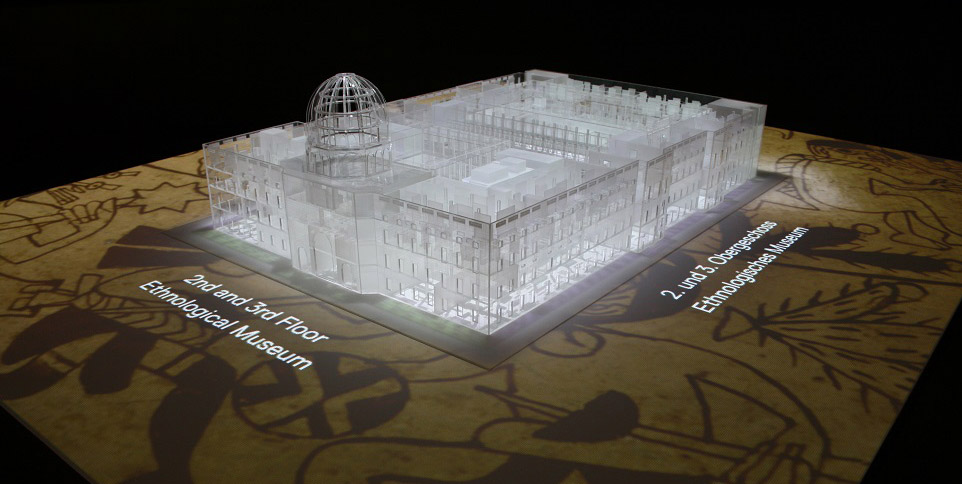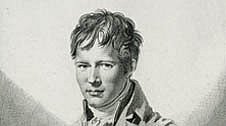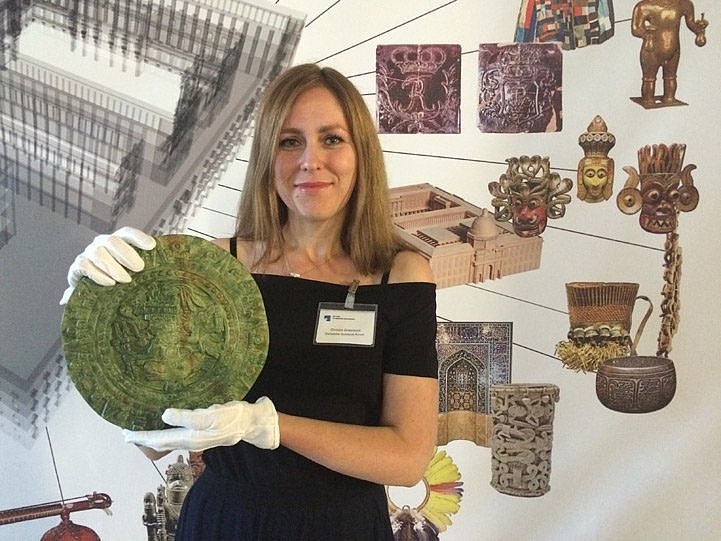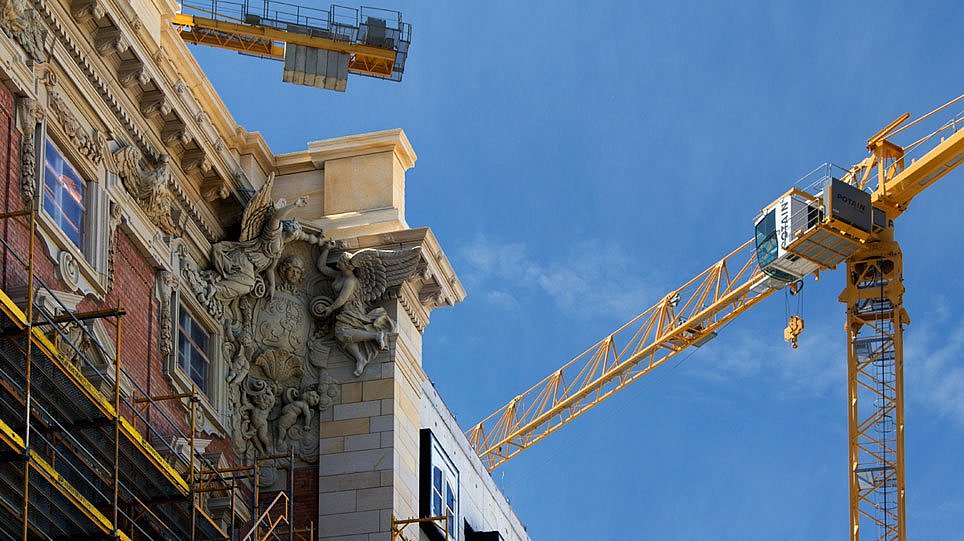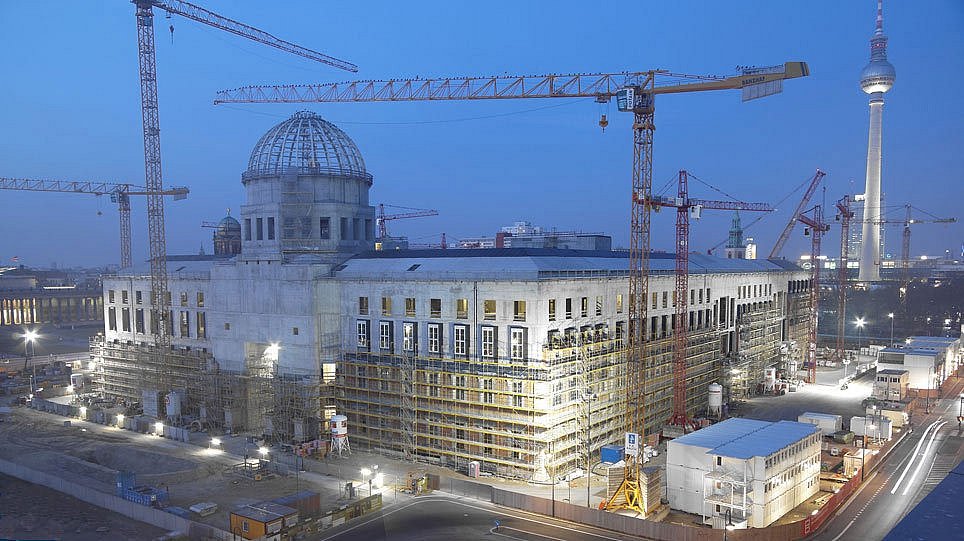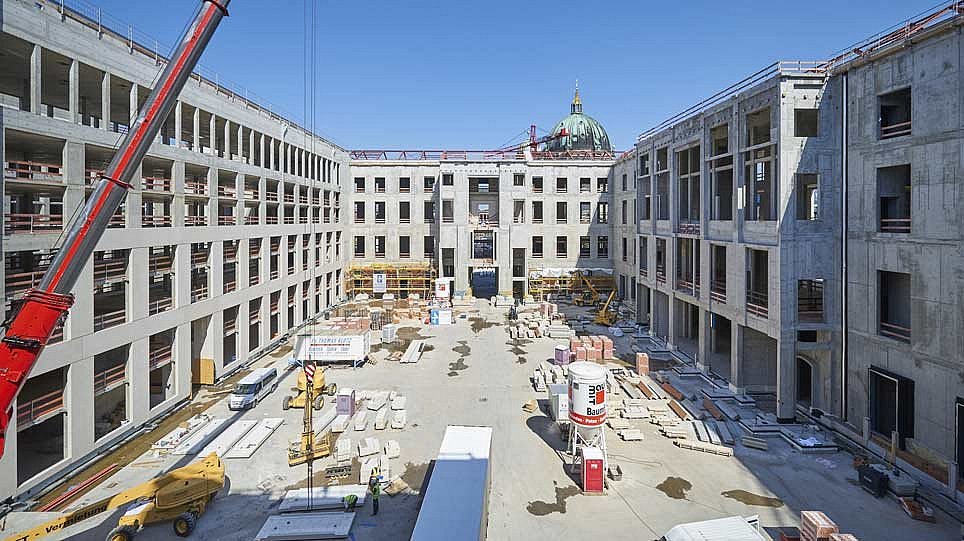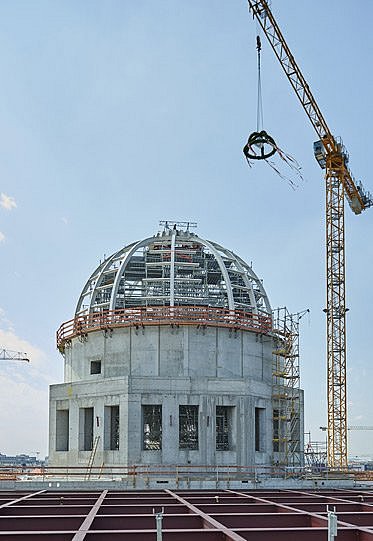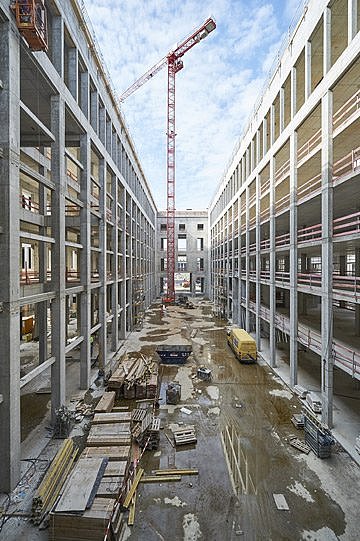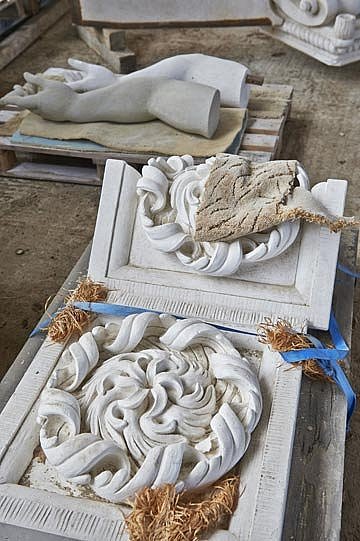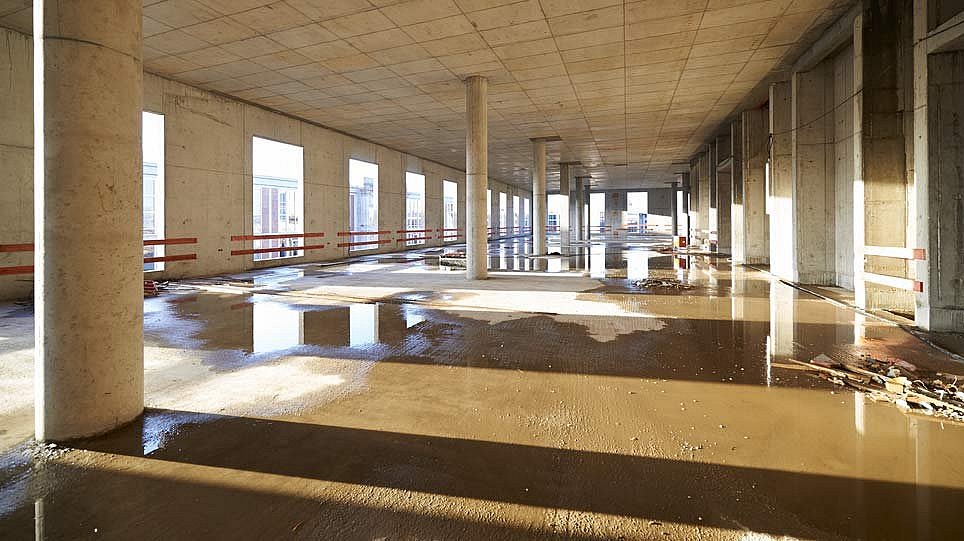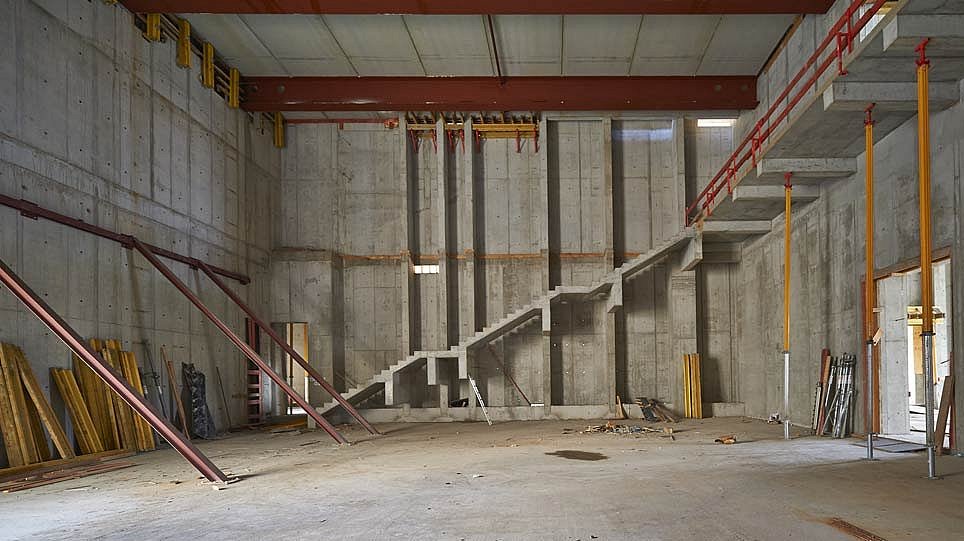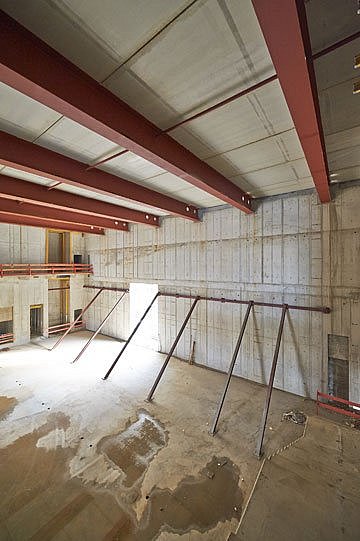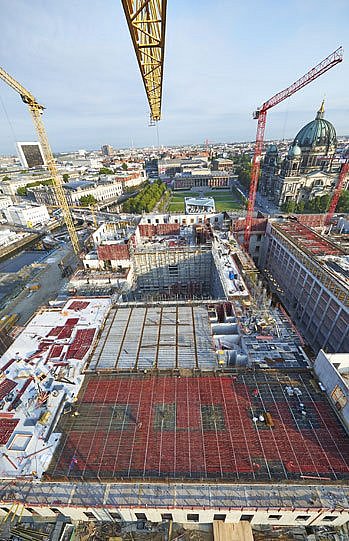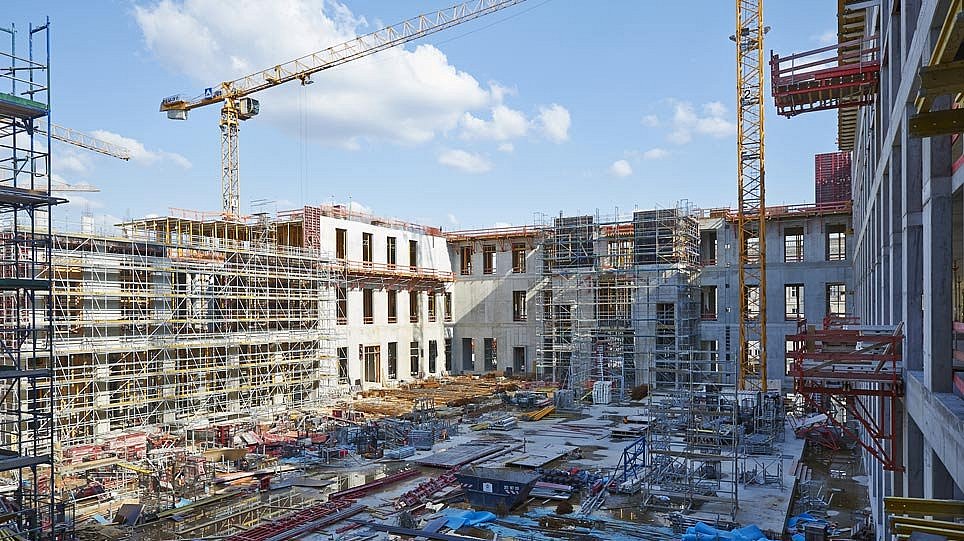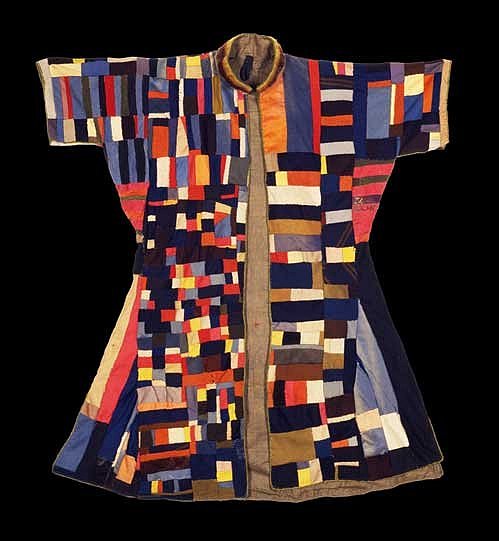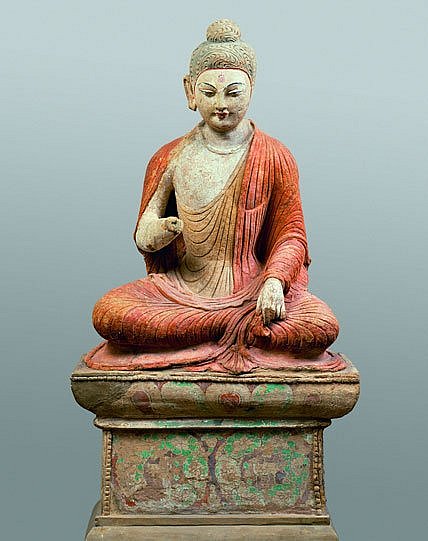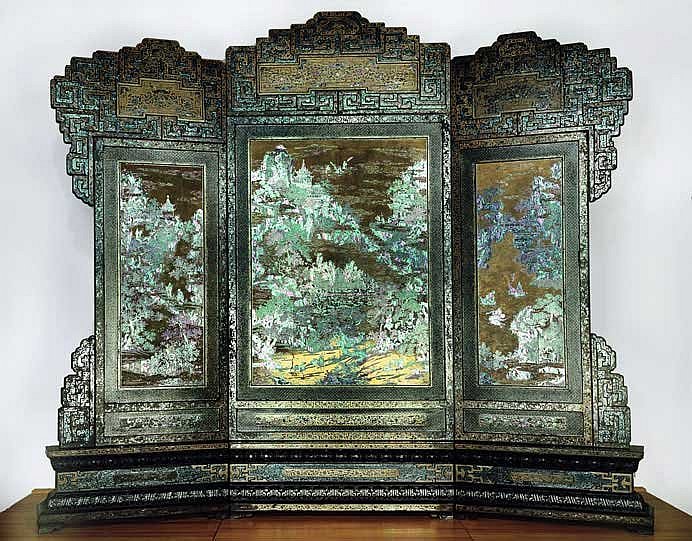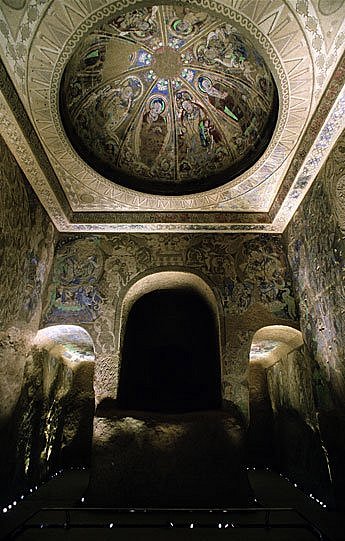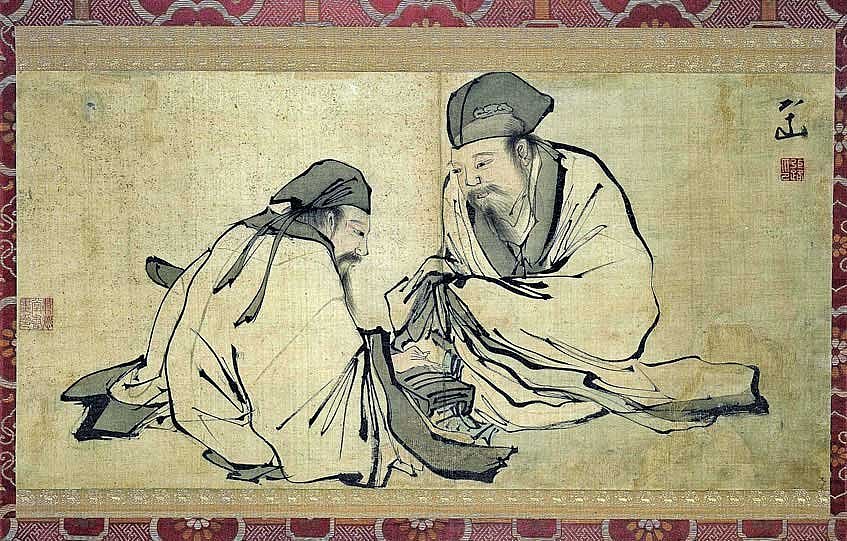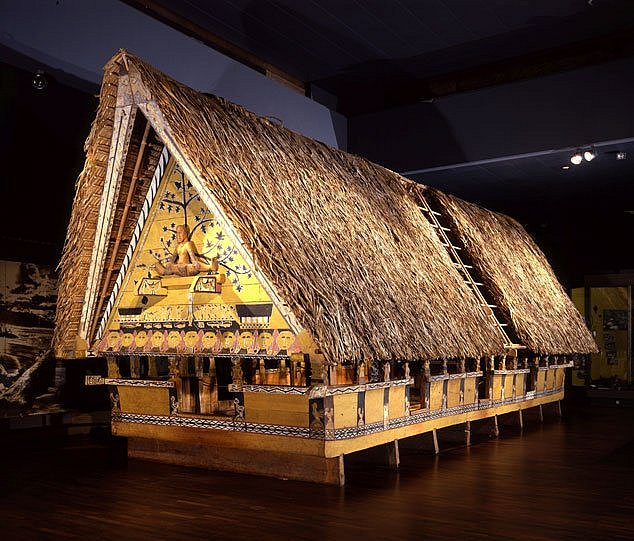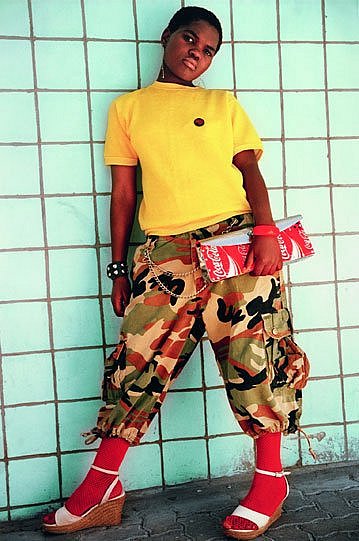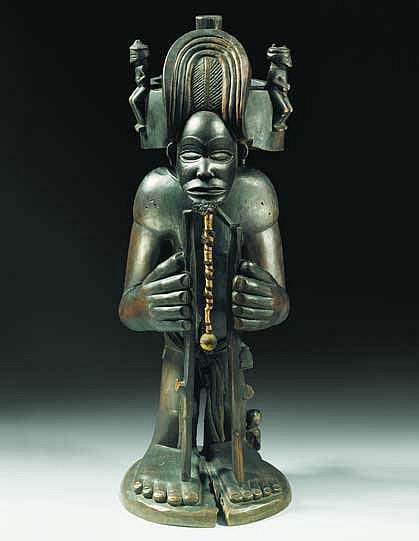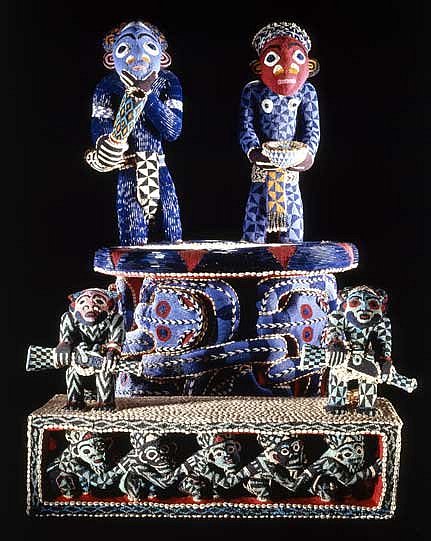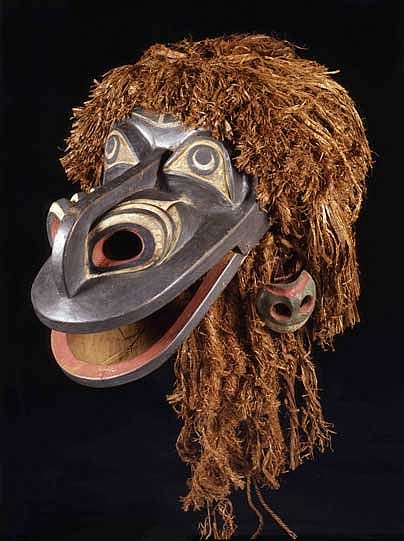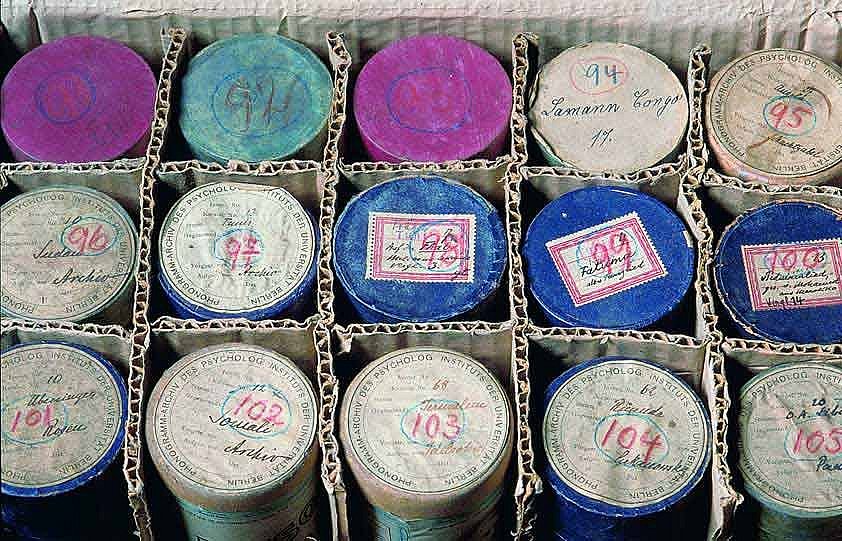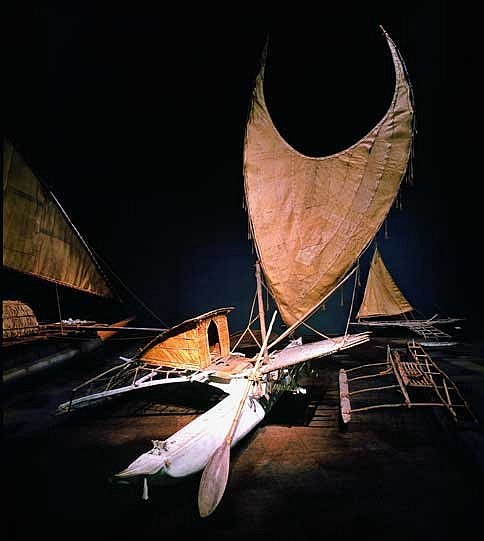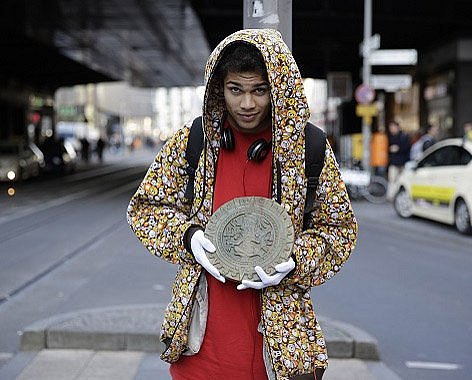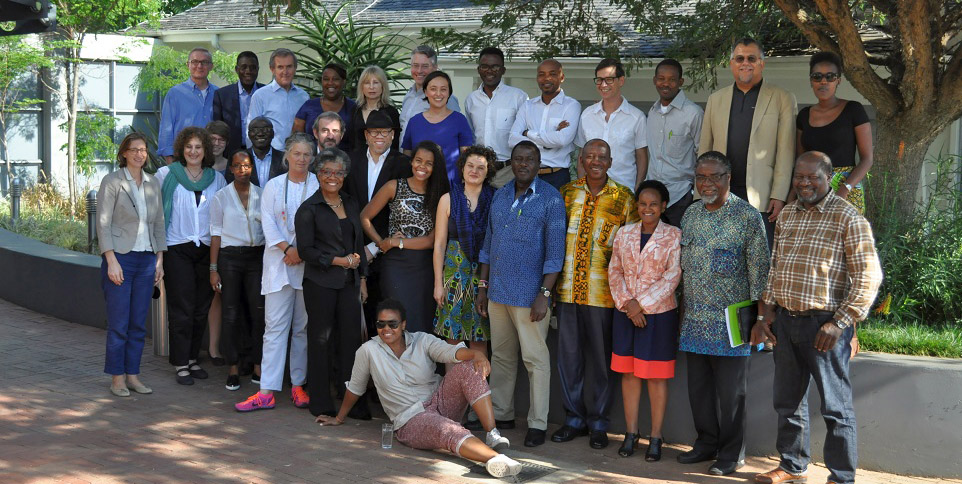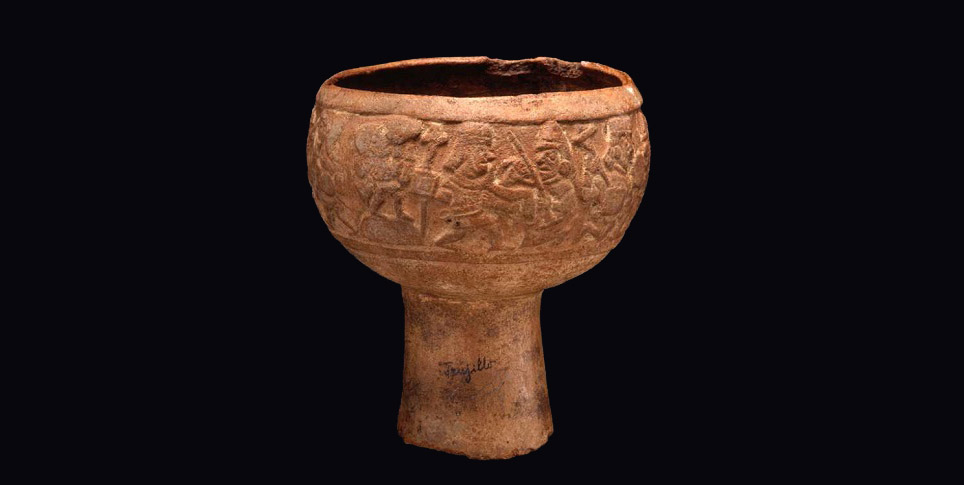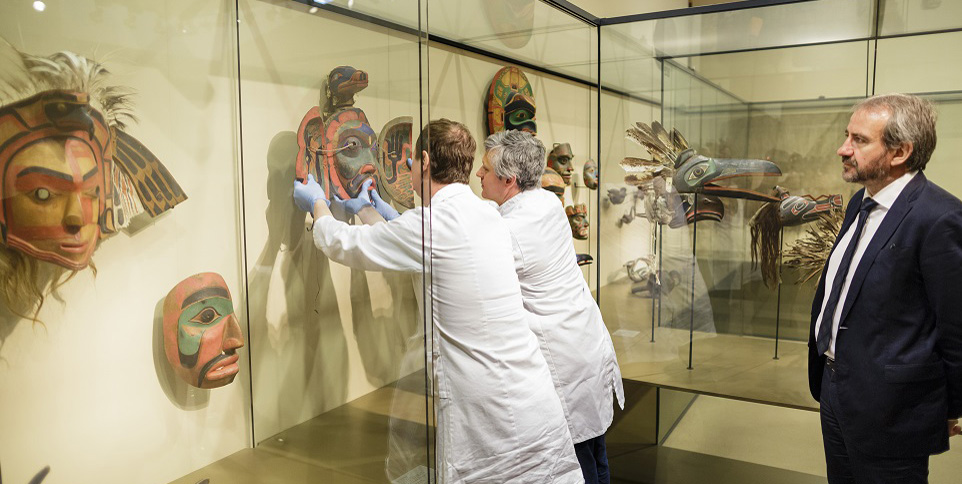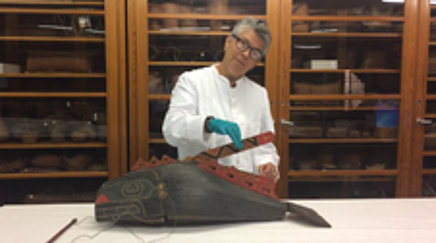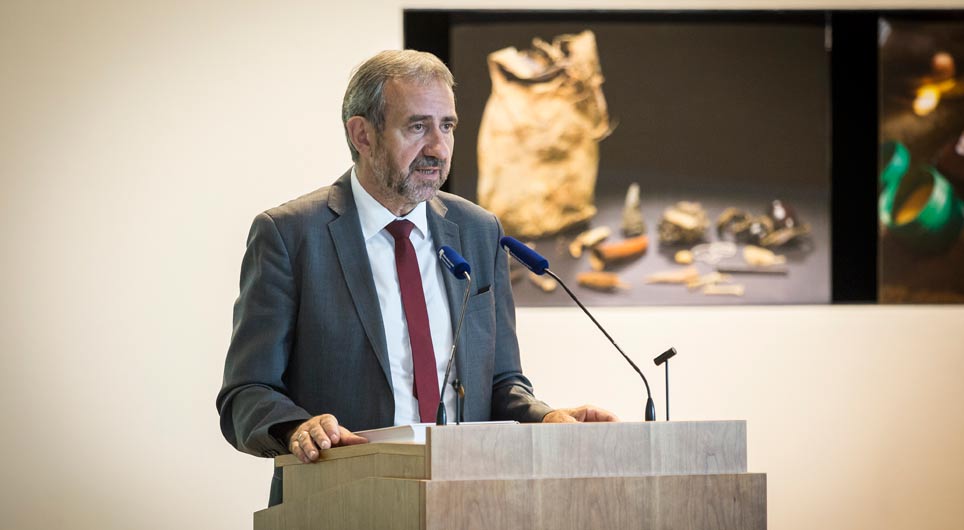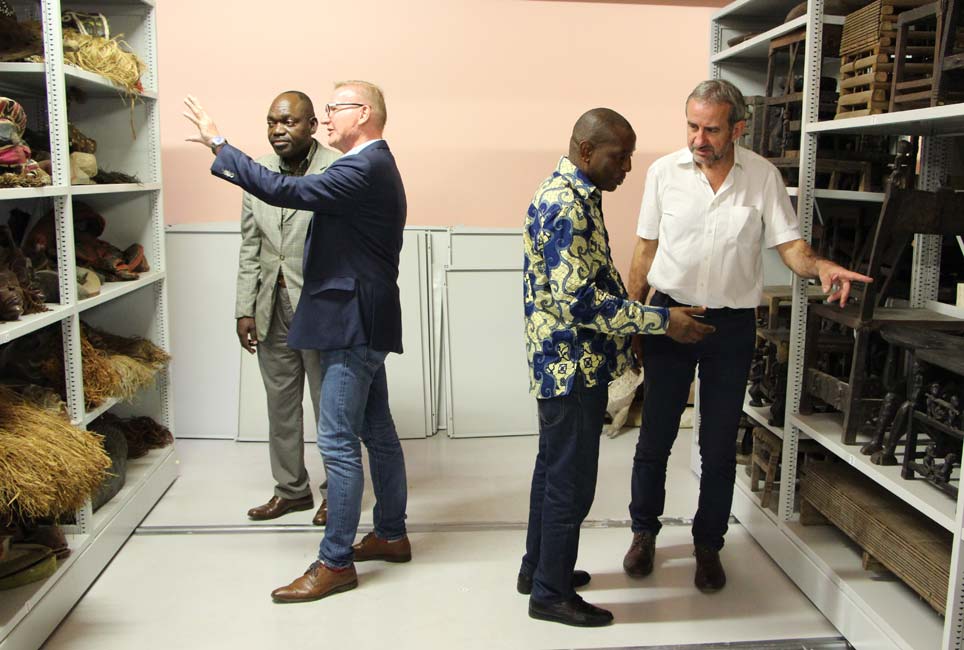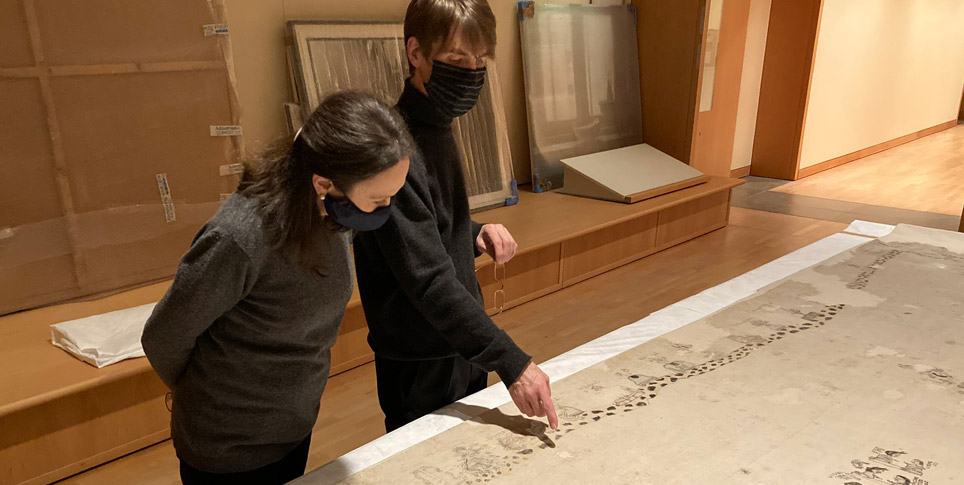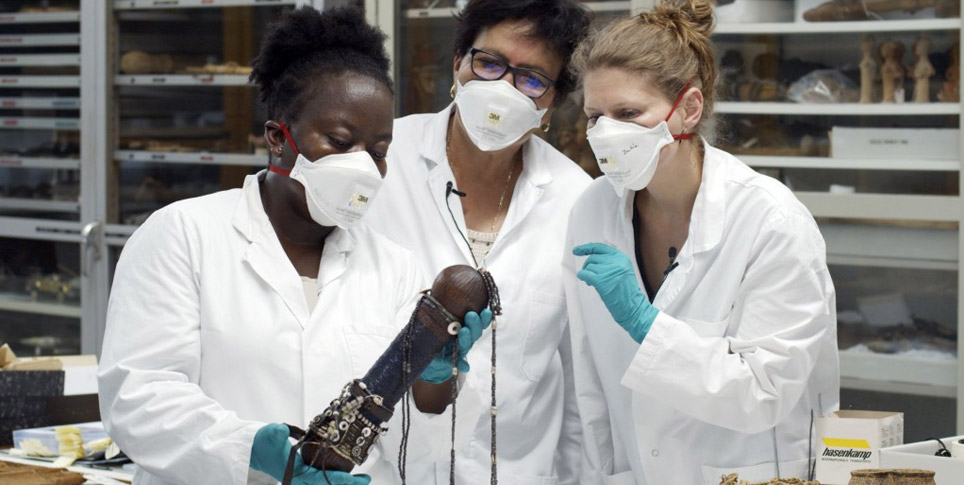What is the Humboldt Forum? What will be on show? Who is involved? And what is special about it? All the answers at a glance
What is the Humboldt Forum all about?
The Humboldt Forum is concerned with nothing less than the history and culture of the world in all its complexity. In 2002, the German parliament voted in favor of reconstructing the City Palace in Berlin. The new building was to accommodate the Humboldt Forum, a new cultural magnet in the historic heart of the capital, where science and art would enter into dialog. On Wednesday, December 16, 2020, the new city quarter will first open digitally and can be experienced virtually..

Glass model of the future Humboldt Forum © SPK / Stefan Müchler
In late summer 2021, the western side of the second and third floors will open with the collection presentations of the Ethnologisches Museum (Ethnological Museum) and the Museum für Asiatische Kunst (Asian Art Museum) of the Staatliche Museen zu Berlin (National Museums in Berlin) – located in the immediate vicinity of the Museum Island. This allows them to be presented on an equal footing with the collections of Western art and culture. Together, the two ensembles will make it possible to experience the art and cultural history of the world in one place. The focus will thus lie not just on the development of culture and on cultural achievements, but also on the universal human struggle to understand the world around us and our place in it, as expressed at different times and in different places. This puts the Humboldt Forum in the intellectual tradition of the cabinet of curiosities that existed at the same location, in the City Palace, until the nineteenth century.
The Kunstkammer Principle
In the 16th century a new phenomenon arose in many European royal courts: the Kunstkammer and Wunderkammer or 'cabinet of art and marvels' which aimed to unite all elements in the world in the microcosm of a collection. The Berlin Palace was no exception to this development and artefacts of both local and non-European origin were placed on display in an area covering several rooms. They included objects from the natural world, from art and science, and historical artefacts. It was hoped that visitors to the royal cabinet of art would gain a deeper understanding of the world as a whole by being able to view, arrange, and handle the various objects gathered there. The collection was simultaneously an archive and a space for ideas. Crucial to this philosophy was Gottfried Wilhelm Leibniz’s idea of a 'theatre of knowledge', which he devised with an eye to the Kunstkammer in the Berlin Palace. For Leibniz, the cabinet of art, laboratory-like in character, offered near utopian possibilities to generate and disseminate knowledge. In the 19th century, cabinets of art were handed over to public use, forming part of museums or university study collections.
Die Humboldt Brüder
Die Brüder Humboldt sind die Namensgeber des Humboldt Forums. Wilhelm (1767-1835) beteiligte sich als preußischer Politiker an der Gründung von Universität und Museen. Die maßgeblich von ihm 1810 mitbegründete Humboldt-Universität zu Berlin verkörperte sein Ideal einer Einheit von Forschung und Lehre in fächerübergreifender Prägnanz. Zudem beschäftigte er sich als Pionier mit der Struktur der außereuropäischen Sprachen. Alexander (1769-1859) führte auf dem amerikanischen Kontinent grundlegende Forschung durch. Die Auswertung dieser Reise beschäftigte ihn ein Leben lang und machte ihn weltberühmt. Manche feierten ihn sogar als „wahren Entdecker Amerikas“ (Simon Bolivar). In seinem Hauptwerk "Kosmos" versuchte er eine Gesamtschau von Natur und der vielfältigen Beziehungen des Menschen zu seiner Umwelt; als einer der wenigen seiner Zeit klagte er Rassismus und Sklaverei an.
What will be on show?
The backbone of the Humboldt Forum is formed by the collections of the Ethnologisches Museum and the Museum für Asiatische Kunst, Staatliche Museen zu Berlin. The Ethnologisches Museum has an area of about 10,000 square meters in which to present its collection of archaeological and cultural objects, together with its large archive of photographs, films, and sound recordings. These items will offer visitors new perspectives on the past and present cultures of Africa, the Americas, Asia, Australia, and Oceania. The rich collection of the Museum für Asiatische Kunst encompasses the art and craft of the region from the 5th millennium BC to the present day: East Asian painting and graphics, lacquer ware and ceramics, the art of the Silk Road, early Indian sculpture, and late Indian painting. Occupying 5,000 square meters in the Humboldt Forum, the museum will exhibit selected works in the context of their social origin and in direct juxtaposition with contemporary and global art. Completing the list of is an exhibition presented by the federal state of Berlin, which will explore the city's historical role in global cultural exchange. In addition, the Humboldt-Universität zu Berlin will showcase science itself, conveying its importance as a central pillar of our culture in an easily accessible way to the public at large.
The Staatliche Museen published an initial exhibition concept in 2008. It was proposed to present the collections in the Humboldt Forum in a contemporary manner that would offer multiple perspectives on universal human questions. From 2012 to 2015, the Stiftung Preussischer Kulturbesitz (Prussian Cultural Heritage Foundation) explored just how this might be done, in particular by means of the experimental projects and events run by the Humboldt Lab. The exhibition designers started work in May 2012. The founding directorate, appointed by Culture Minister Monika Grütters in 2015, will present its concept for the content and the main topics towards the end of 2016. It is planned to begin moving the first large objects from Dahlem in April 2018.
History – Ethnologisches Museum
- Origin: Brandenburg-Prussian art cabinet in the Berlin City Palace
- 1855 onwards: The ethnographic collection is exhibited in the Neues Museum.
- 1869: Adolf Bastian is appointed directorial assistant at the ethnographic collection and promotes its continual expansion.
- 1873: An "independent ethnological and anthropological museum in Berlin" is founded by Director Adolf Bastian, who is credited today with having established anthropology as a field of academic study.
- 1886: Inauguration of the Royal Museum of Ethnology on Stresemannstrasse. It contains around 40,000 objects.
- 1926: The holdings are divided and kept at two different sites: the study collection (in a new storage building in Berlin-Dahlem) and the permanent exhibition (in the main building on Stresemannstrasse)
- Start of World War Two: The holdings are evacuated to a variety of locations inside and outside of Berlin
- 1964 onwards: The building in Dahlem is extended to create a large museum complex for displaying the collections from Ancient America, Oceania, Africa, and parts of Eastern and Southern Asia.
- 1990s: Some of the Soviet spoils of war are returned to Berlin (55,000 objects)
- 2000: The Museum für Völkerkunde (Museum of Ethnology) is renamed the Ethnologisches Museum (Ethnological Museum).
History – Museum für Asiatische Kunst
- Origin: Brandenburg-Prussian art cabinet in the Berlin City Palace
- 1855 onwards: The ethnographic collection is exhibited in the Neues Museum.
- 1869: Adolf Bastian is appointed directorial assistant at the ethnographic collection and promotes its continual expansion.
- 1873: An "independent ethnological and anthropological museum in Berlin" is founded by Director Adolf Bastian, who is credited today with having established anthropology as a field of academic study.
- 1886: Inauguration of the Royal Museum of Ethnology on Stresemannstrasse. It contains around 40,000 objects.
- 1926: The holdings are divided and kept at two different sites: the study collection (in a new storage building in Berlin-Dahlem) and the permanent exhibition (in the main building on Stresemannstrasse)
- Start of World War Two: The holdings are evacuated to a variety of locations inside and outside of Berlin
- 1964 onwards: The building in Dahlem is extended to create a large museum complex for displaying the collections from Ancient America, Oceania, Africa, and parts of Eastern and Southern Asia.
- 1990s: Some of the Soviet spoils of war are returned to Berlin (55,000 objects)
- 2000: The Museum für Völkerkunde (Museum of Ethnology) is renamed the Ethnologisches Museum (Ethnological Museum).
Who Does What?
- The Ethnologisches Museum (Ethnological Museum) and the Museum für Asiatische Kunst (Asian Art Museum) of the Staatliche Museen zu Berlin (National Museums in Berlin) provide an overview of the art and cultures of the world spanning epochs and continents. On the second and third floors, some 20,000 exhibits from the world's major collections open up new perspectives on the past and present cultures of Africa, America, Asia and Oceania.
- The Berlin exhibition on the second floor of the Humboldt Forum is a co-production of Kulturprojekte Berlin and the Stadtmuseum Berlin Foundation. Covering 4,000 square meters, it tells how the city, its people and the events emanating from it have changed the world, and how global events have affected Berlin - then and now. It is a contemporary view of the city and its worldwide connections.
- The Humboldt Laboratory is a project of the Humboldt-Universität zu Berlin (Humboldt Universitiy of Berlin). The first exhibition "After Nature" deals with the interaction and crisis of natural and social systems. The Humboldt Laboratory is an interface, a hub where debates and discourses are stimulated and new knowledge is generated. It is a living workshop of ideas, where science meets art, society and politics, a "HUB of science".
- The Stiftung Humboldt Forum im Berliner Schloss (Berlin Palace – Humboldt Forum Foundation) is responsible for the exhibition of the "History of the Site". Monastery, Berliner Schloss and Parade Grounds, Palast der Republik (Palace of the Republic) and cultural construction site – there is hardly any other place in Berlin where social, urban, political and cultural developments have become so concentrated over the last 800 years as on the Schlossplatz (Palace Square). The Humboldt Forum shows this history in several permanent exhibition areas with numerous original objects, media stations and interactive offers.
What is Special About the Humboldt Forum?
The Humboldt Forum is a universal museum for the 21st century. It is designed to appeal to all kinds of people, regardless of their origin, age, education, interests, knowledge, or preferences. It should therefore be thought of less as a temple of knowledge than as a participatory laboratory that responds to changes in society.
The goal is to tell the universal story of the human race from multiple perspectives, and to reveal new connections between the various strands of mankind’s history the world over. The new presentation of the collections places importance on critically examining the acquisition history of exhibits from all corners of the world. The Humboldt Forum's declared goal is to make the collections represented there accessible in new ways, and to do so in consultation with the countries of origin, cultural experts, artists, and representatives of indigenous groups, according to the principle of shared heritage
Shared Heritage
Guideline for dealing with the objects in the collections that have been acquired in a colonial context. It aims to allow the societies of origin to share in their respective cultural property, of which the museums are only stewards. The presentation of these objects should follow the principle of multi-perspective narration. This means communicating views other than those of European scholars and making clear the different histories that are inherent in a given object, including the effects of colonial rule.
